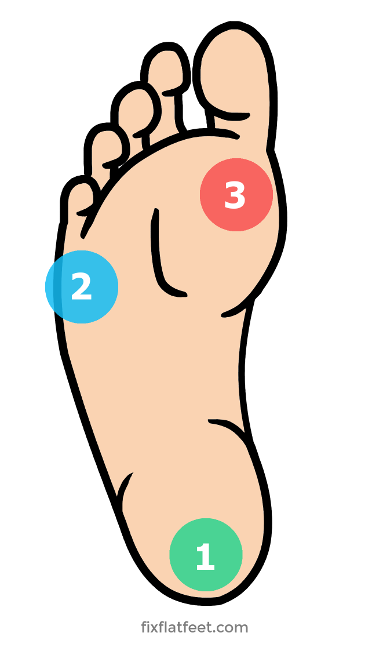
Are you doing short foot correctly? | Clearing the confusion
I think it goes without saying that I have a passion for sharing the power of foot activation and how it fascially connects to central core stabilization. My go-to for foot activation is none other than – short foot!
Considered by some as merely of foot-specific exercise and not one that is integrated or applicable to total body function, I think it’s time to clear the confusion around this exercise – and foot function in general!
Having taught short foot to professionals, patients and athletes all around the world for over 10 years, I’ve seen it all. I’ve literally taught short foot to over 25,000 people and have seen every confusion, mis-cueing, compensation pattern and foot type.
Because I understand the power of proper short foot activation, I get a little let’s say passionate when I see and hear professionals cueing short foot incorrectly.
What gets me even more worked up is that those that are cueing short foot incorrectly are professionals who are being followed and trusted as “experts” in the industry.
The Dunning-Kruger Effect
Having thousands of Instagram followers and posting cool pictures that favor natural foot function does not make one a foot expert. Yet what these professionals are posting and saying is being taken as gospel, possibly because they are being stated with such confidence it must be correct. Right?
Sadly most of the posts and statements that are being made are black and white concepts. The foot is supposed to do X and therefore Y. I wish it was that easy, but the human body is far too complex to be X = Y. There is a lot of grey when it comes to programming, cueing and yes – overall foot function.
What is the risk of posting pictures and statements or teaching concepts that are black and white or X = Y? People can get hurt. Trust gets broken. Confusion gets created.
Clearing the Confusion on Short Foot
It’s time to set the record straight. I”m going to go into the proper way to cue and execute short foot. My cueing technique is backed by anatomy, science and a deep understanding of true foot function. No conclusions are being made based off of associations.
Disclaimer: After reading this, if you realize that have been doing short foot incorrectly. It’s okay! This is not an attack on anyone or a criticism to any professional out there – even to the ones that are cueing short foot incorrectly. I just want short foot to be represented in its true form so that we get the optimal benefits and reduce the risk of injury.
Step 1 – Teach 1 foot at a time.
I usually cue to go into a split stance so that you can focus on just the front foot initially.
Why we want to teach one foot at a time is that the mind-muscle connection of executing short foot bilateral is too high for many clients. To start with one foot allows the focus to be centered on a more local foot engagement.
Step 2 – Slightly bend the knees to unlock them
When we do short foot we create a locking mechanism up the lower extremity. If you do short foot on a fully extended knee you are essentially locking a locked joint. This can create shear to the meniscus and create injury to our clients.
As the Hippocratic Oath states “thou shalt do no harm” – so I kindly remind you to slightly bend the knees.
Step 3 – Place the foot in neutral and find the foot tripod

Ensuring the rear foot is not pronated during short foot is critical – reason being is that a pronated foot is unlocked and unstable with the muscles in a lengthened position. This makes in ineffective to engage short foot.
After the rear foot is put into a neutral position, then it’s time to find the foot tripod. This means to center body weight under the 1st metatarsal head, 5th metatarsal head and heel.
Disclaimer: This is NOT to be confused with the foot staying on the tripod throughout the exercise – or to push the tripod down during short foot.
Step 4 – Lift the toes, spread them out and place them on the ground
To further complete the base of support and centered foot position we need all digits to be spread wide and long. We will shortly see that the true action of short foot is in the digits which is why this is going to be an important aspect of the short foot cue.
Step 5 – While exhaling, push the tips of the toes down into the ground
The true cue for short foot is in the long flexors (FHL, FDL) which insert into the plantar, distal aspect of the toes. These muscles anchor or root the tips of the toes (think toenails) down into the ground.
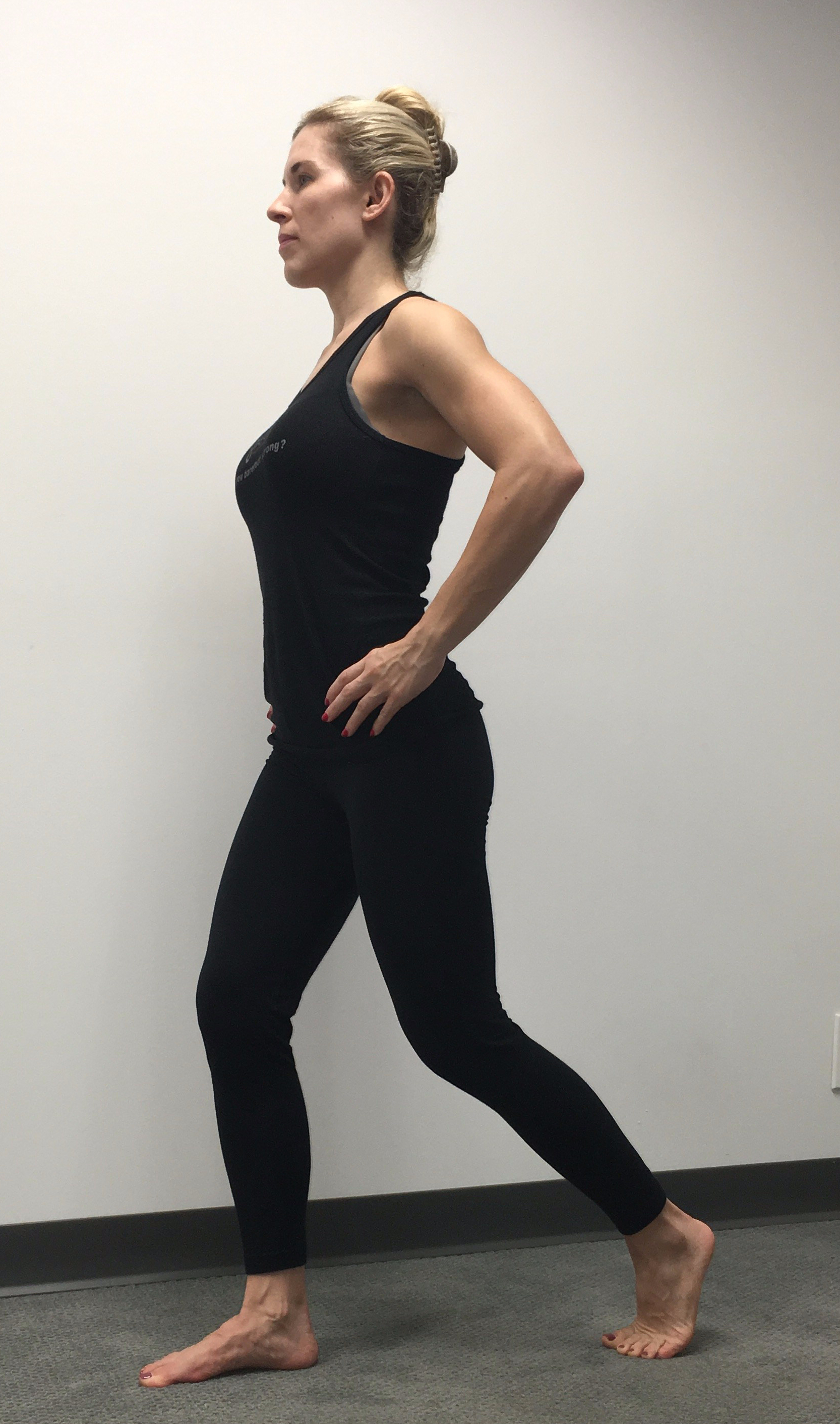 The pushing of the distal tips of the toes into the ground not only activates the long flexors but it also engages the plantar fascia via the reverse windlass mechanism. Both the action of the long flexors and plantar fascia is to increase the arches of the foot (longitudinal and transverse) which ultimately lifts us off of the ball of the foot.
The pushing of the distal tips of the toes into the ground not only activates the long flexors but it also engages the plantar fascia via the reverse windlass mechanism. Both the action of the long flexors and plantar fascia is to increase the arches of the foot (longitudinal and transverse) which ultimately lifts us off of the ball of the foot.
What we should see when we push the tips of the toes down into the ground is that the 1st metatarsal head lifts off of the ground.
Now to be clear, I don’t want YOU to lift the 1st metatarsal head off of the ground – I want it to be a reaction of the contraction.
If YOU lift the 1st metatarsal head off of the ground, chances are you are going to over engage short foot and can create too much hypertonicity.
Now this is where the cueing goes wrong!
Many – I repeat – many professionals are cueing short foot as pushing the 1st metatarsal head down into the ground. This is wrong. This is incorrect. This does not transverse to function. This is a literal translation of the foot tripod and a gross misrepresentation of true function of the foot. (More on this soon!)
Step 6 – Incorporate the pelvic floor
The final step we want to integrate with short foot is the deep core. To be truly integrated we need the entire Deep Front Line to be a part of this short foot exercise. This means that as we exhale, we want to focus on lifting our pelvic floor and pushing the tips of our toes down into the ground.
The result?
All of the central domes in our body stack. The arch, the pelvic floor, the diaphragm – and technically our palate all lift during activation.
Clearing the Confusion!
So now that we know the proper way to cue short foot. It’s time to clear the confusion how short foot. The most common incorrect cue that I hear is pushing the 1st metatarsal head down as the activation.
I am not sure who started this trend but it is wrong.
Yes we do start by finding our foot tripod – but that doesn’t mean we should literally push into the foot tripod as the form of foot activation for foot stability.
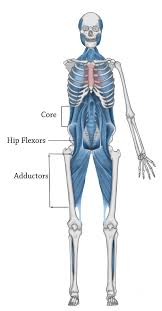
So why not? We need to defend our reason of why not!
Answer #1 – Deep Front Line.
Short Foot is a Deep Front Line activation. Remember the true purpose of activating our feet is to get them to “talk to” our core or center.
If we look at the Deep Front Line, the muscles of the feet that we see are the Flexor Hallucis Longus, Flexor Digitorum Longus, Posterior Tibialis and Anterior Tibialis.
As mentioned earlier, the cueing I use for short foot is to push the tips of the toes down into the ground. The reason? Because this is the action of the flexors!
When we push the 1st metatarsal down into the ground we are activating the peroneus longus muscle.
Do you see that muscle in the Deep Front Line? I don’t either!
Answer #2 – 1st Ray Plantarflexion & the 1st MPJ
To further understand the purpose of 1st metatarsal plantar flexion (or pushing the 1st met down) we need to understand the true functional reason behind this action.
When does our 1st metatarsal FUNCTIONALLY want to plantar flex?
During push-off!
The action of 1st metatarsal plantar flexion is to allow the 1st MPJ to dorsiflexion – an action that occurs during push-off. When we take a step, run or jump our great toe dorsiflexes to create a rigid lever for forward (or vertical) progression.
I did a whole blog series on the 1st MPJ where I went into the actions of slide, glide and jam but essentially one of the most critical steps in dorsiflexion of the big toe is 1st metatarsal plantar flexion. However. We must pause there. This 1st metatarsal plantar flexion is actually not DOWN but rather it is BEHIND us.
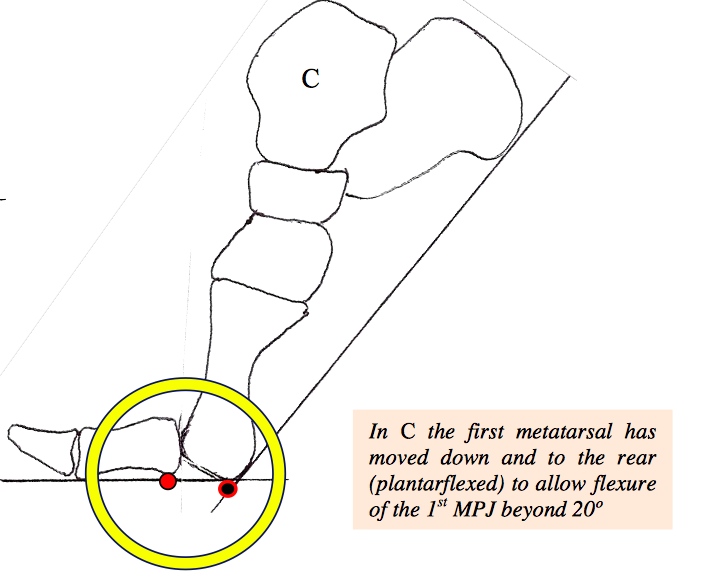
If you see in the image to the right, 1st metatarsal plantar flexion is actual BEHIND us as
we shift our COG forward, this is how we truly dorsiflex the great toe.
How does this relate back to short foot? This means that to train the 1st metatarsal to literally push down into the ground has no true functional transfer.
Answer #3 – Sesamoids
The final reason of why I do not cue pushing the 1st metatarsal head down has to do with the sesamoids. The sesamoids are two small bones that sit within the Flexor Hallucis Brevis tendons and sit directly under the 1st metatarsal head.
Like the patella (knee cap) the sesamoids are not intended to be passive weight bearing bones but rather ones that transfer force during functional movement.
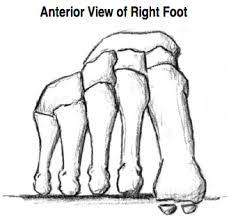 The image to the left shows that the sesamoids are the lowest bones in the foot and if there is intentional 1st met plantarflexion into the ground (due to a miscue of short foot) then there is increased force to these small bones.
The image to the left shows that the sesamoids are the lowest bones in the foot and if there is intentional 1st met plantarflexion into the ground (due to a miscue of short foot) then there is increased force to these small bones.
This can greatly increase the chance for sesamoiditis and sesamoid fractures – two conditions that are a b*#! to treat.
In addition, some of the clients and patients being cued to push down into their 1st metatarsal head during short foot may actually have a functional plantarflexed first ray which can be exacerbated with improper short foot cueing. The negative impact of a plantar flexed 1st metatarsal (ray) is functional hallux limitus, which can lead to a myriad of compensation patterns during walking.
Did I confuse you more?
If the above was a little like “what the hell is she talking about” then good! This is is how confusing the foot is!
It is not black and white. It is not X = Y.
It is grey with a lot of exceptions with any cue or exercise. This is why I created the Barefoot Training Specialist® Certification and have trained a very niche group of qualified Master Instructors under EBFA Global.
Are you more of an auditory learner?
Tune in below for a video summary I did on this exact topic.
Still confused? Email me! dremily@ebfafitness.com
In summary, honor the power of the foot. Consider who you are using as your sources. Ask questions. And don’t take anything anyone says as gospel. Ask for the WHY?
Stay #barefootstrong
Dr Emily Splichal, DPM, MS, CES
